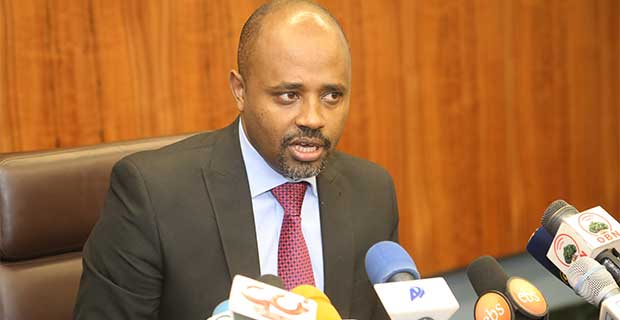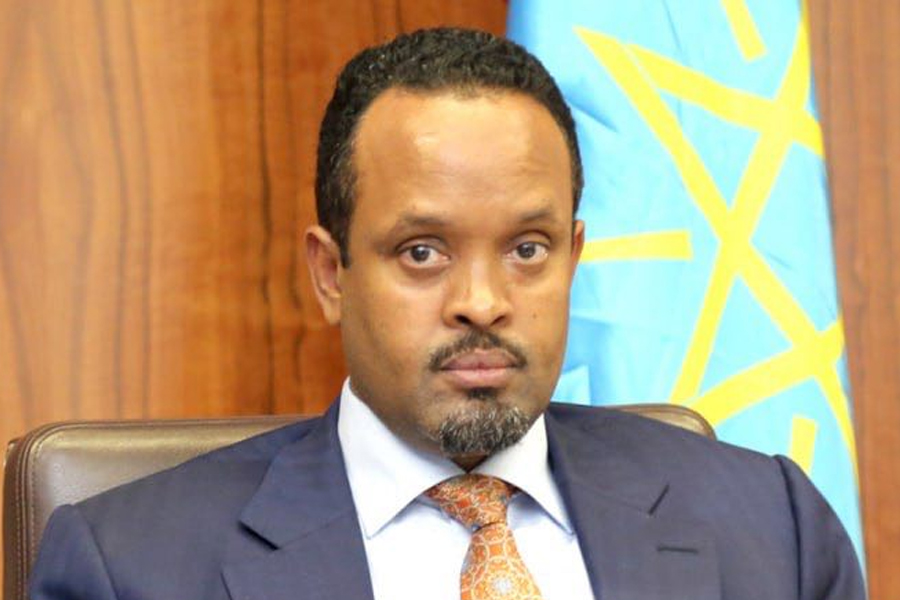
Fortune News | Feb 08,2020
Sep 21 , 2019
By Zinabu Samaro (PhD) ( Zinabu Samaro (PhD) (zinabu.samaro@gmail.com), a development economist with particular interest in late development, industrialisation and regional economic integration. )
The economic reform plan the government unveiled recently shares an eerie resemblance to the infamous and disastrous reform package known as structural adjustment programmes (SAPs), argues Zinabu Samaro (PhD) (zinabu.samaro@gmail.com) a development economist whose research has appeared in peer-reviewed academic journals such as Cambridge Journal of Economics and Structural Change and Economic Dynamics.
The administration of Prime Minister Abiy Ahmed (PhD) inherited an economy with many serious problems. These included high levels of unemployment, high rates of inflation, stagnant, declining export earnings and shortages of forex.
It is only natural that his administration took office with promises of economic reform alongside political reforms. However, it had been criticised for not issuing a comprehensive reform package – a road map outlining what the administration intends to do to address economic challenges.
For keen observers of economic ideology and policy, the direction of the economic reform was very clear from the outset based on the statements and priorities that were declared - even in the absence of an official road map. The road taken has been unmistakably neoliberal through and through.
Soon after taking office, major economic reforms were announced in areas that were previously considered “off limits” by the EPRDF regime including telecoms, electricity and banking, marking a landmark shift in the country's development model. Terms and concepts such as “austerity,” “tightening the belt,” “living within one’s means,” “balancing the budget” and “managing macroeconomic imbalances” have been commonplace in the statements of the Prime Minister, his subordinates and advisors.
They are drawn from the dictionary of a right-wing economic ideology, which confuses the management of public finances with that of household finances. It justifies inequality in society as just and necessary. It readily sacrifices long-term economic prospects for short-term efficiency; glorifies the market and abhors the role of the state in the economy (unless the role is to promote and protect the interest of the haves against the have nots). Most of all, it puts the interest of finance capital – particularly foreign capital – above the interest of everyone else.
The administration has announced details of its economic road map and baptised it as, “A Homegrown Economic Reform Agenda: A Pathway to Prosperity”. However, the reform agenda is neither homegrown nor a pathway to broad-based prosperity.
The reform plan shares an eerie resemblance to the infamous and disastrous reform packages known as structural adjustment programmes (SAP). These were neoliberal economic packages imposed in the early 1980s on most African countries by international economic institutions such as the World Bank and IMF and their Western backers as a precondition for lightening the weight of external debt and financial support to address economic malaises that were affecting the economies. The SAPs had five key components: fiscal austerity; liberalisation of external trade, investment and finance; deregulation; devaluation and privatisation of state-owned enterprises.
The consensus of critical literature on the impacts of SAP-induced reforms in Africa is that the most liberalised, “adjusted’’ and “reformed” economies ended up with economic stagnation, premature de-industrialisation and agricultural decline. Poverty, inequality and balance of payments problems got worse. The technological, productivity and skill-structure of the economies went backwards.
Like its Sub-Saharan African peers, the post-Dergue government of Ethiopia was also forced by circumstances to adopt a strong dose of SAP in the early 1990s imposed on it by the same global forces. The package contained the standard fare: trade liberalisation, devaluation of the Birr, privatisation of state-owned enterprises and deregulation of prices.
The privatisation initiative was extensive even if most of the state enterprises did not attract the interest of foreign investors. Where there have been strong and persistent external pushes and interest from foreign companies and governments is in the areas of finance and telecoms, which the EPRDF government had, until recently, considered strategic and reserved for government or the domestic private sector. Therefore, the current drive to liberalise these sectors for foreign competition is a thinly disguised attempt to complete the "reform" and "adjustment" programme that was initiated decades ago but stalled due to the resistance of the late Prime Minister Meles Zenawi’s administration. In this sense, the "new" economic reform package is not new. Nor is it homegrown.
Two features of the recently released economic reform package strengthen this argument. The first is the similarity of both the language and approach to that advocated by the World Bank and the IMF for many years. The World Bank has published numerous reports which acknowledge the past success of the Ethiopian government in achieving high rates of GDP growth and improvements in social sectors such as education and then go on to advocate more liberal, private sector-oriented models. The recently released economic reform package follows the same approach.
Secondly, the government and the US Embassy in Addis Abeba announced a flagship initiative aimed at supporting Ethiopia’s economic reform. Tellingly, the initiative is spearheaded by Ricardo Hausmann (Prof.) who was the leader of a right-wing team that designed and oversaw one of the most regressive and devastating economic reforms in Venezuela between 1989-1992.
The new reform plan laments that past economic success has not led to structural transformation. But it does not relate this to the unbalanced focus of the EPRDF government on social sectors like education at the expense of structural transformation, development of industry and other modern economic activities. Until a few years ago, modern urban economic activities and industry have been overshadowed by the obsessive focus of the EPRDF government on rural development, poverty reduction and global agendas such as the Millennium Development Goals, which treat symptoms of underdevelopment rather than its root causes.
When discussing the external debt of the country, the reform plan does not mention the fact that one-third of the debt consists of loans by the World Bank Group (IDA). This includes loans extended toward food security, the safety net and public sector reform programmes – programmes that are never meant to address issues of structural transformation and programmes that could have been easily financed by making use of "the power of the public purse" if necessary.
The reform plan glosses over some important issues to arrive at ideologically motivated conclusions. For instance, it is a well-known fact that episodes of high inflation in Ethiopia have been highly correlated with external factors like global petroleum price hikes and major currency devaluations. However, the plan resorts to simple average to gloss over the inflationary spikes to arrive at conclusions such as high inflation leading to real exchange rate appreciation which purportedly erodes competitiveness. This is the same overly simplistic and faulty economic logic that was used by the Ethiopian government when it devalued the Birr by 15pc in 2017 arguing that it would discourage imports and encourage exports thereby improving hard currency reserves of the country. Instead, it had a significant inflationary impact without achieving its goals, because the structure and trends of imports and exports have deep-rooted structural and technological determinants. There are no shortcuts via devaluation to achieve external competitiveness without addressing the structural and technological bottlenecks in the economy.
The plan’s underlying analysis of the perennial problem of forex shortages and external imbalances is shallow and misdiagnoses the problem. While it argues that high demand for imports and poor export performance resulted in large current account deficits and significant forex shortages, the plan does not delve into how rapid liberalisation of external trade in the early 1990s under the original liberal reform programme directly led to a rapid and persistent expansion of Ethiopia’s trade deficits, which have been amplified during episodes of rapid GDP growth.
The plan fails to consider the demand side of the forex equation. There is no discussion about what the hard-earned dollars are being spent on. A simple look at the import statistics would have shown how the economy has been throwing away precious forex left and right for non-essential products, which can be domestically substituted easily with a well-executed "carrot-and-stick" approach.
While it also jumps into an ideologically motivated conclusion that forex regulations are one of the constraints to doing business in the country, it does not look at why non-value adding businesses such as second-hand car importers have much easier access to forex, while value-adding and employment creating businesses such as factories face a dire shortage. For instance, it makes sense under the current Ethiopian context to propose strategies aimed at easing access to forex for the import of apple seedlings, which produce ten times the locally available varieties and easily available in Holland compared to those who import apple fruits from New Zealand and California. Instead, one of the proposals aimed at improving agricultural production in the current reform plan is to increase private sector investment in agricultural research and development, as if this is needed and relevant to the Ethiopian context.
It also fails to consider how and why the past focus of the government on micro-enterprises – an approach which has never worked anywhere in the world – has failed and fails to stress the need for shifting focus and resources toward small and medium local enterprises that have much better potential for growth, creation of employment and adding value.
A truly homegrown privatisation agenda would draw lessons from what went right and what went wrong in the previous efforts to privatise state-owned enterprises. For instance, it would assess why domestic consumption-oriented enterprises such as breweries attracted significant foreign investment while most others did not.
Instead of rushing to sell-off state monopolies such as Ethio telecom to foreign capital, a truly homegrown reform agenda would first assess the causes of any inefficiencies in such companies and try to address them. If the assessment concludes that private ownership and competition are the best way forward, the first reasonable proposal should have been to look at ways of privatisation to domestic investors and liberalisation of the telecom market for domestic competition rather than to a foreign one.
A truly homegrown economic reform agenda would also try to learn lessons from other countries that privatised public utilities such as electricity generation and distribution before rushing to partially or wholly sell off state utilities. Unless the plan is intentionally blind to evidence, recent years have witnessed a rising tide across the world against privatisation of public utilities and toward renationalisation.
Moreover, if the reform plan were truly meant to serve as a pathway to prosperity, it would have done an in-depth stocktaking exercise on the previous development models, approaches, strategies, policies and programmes of the EPRDF government.
The plan looks like a repackaged and rebranded version of the debunked and disastrous neoliberal “Washington Consensus” agenda aimed mainly to attract foreign investment, credit and approval from the major donors and multilateral creditors and to temporarily relax the forex shortage on the import-hungry economy rather than to forge a path toward broad-based and sustainable prosperity.
If it were to usher in long-term prosperity, the reform plan would have focused on addressing the obvious weaknesses, mistakes and shortcomings of the previous development models – such as Agricultural Development-led Industrialization and the so-called developmental state model. It would also prioritise addressing issues such as state capture, rampant corruption, an unholy union between state and party and destruction of meritocracy in public service and public enterprises.
PUBLISHED ON
Sep 21,2019 [ VOL
20 , NO
1012]

Fortune News | Feb 08,2020

Radar | Jul 13,2025

Fortune News | Sep 14,2024

Fortune News | Apr 28,2024

Viewpoints | Sep 14,2019

Radar | Oct 31,2020

Viewpoints | Jul 02,2022

Agenda | Mar 21,2020

Fortune News | Jul 13,2025

Fortune News | Oct 23,2018

Dec 22 , 2024 . By TIZITA SHEWAFERAW
Charged with transforming colossal state-owned enterprises into modern and competitiv...

Aug 18 , 2024 . By AKSAH ITALO
Although predictable Yonas Zerihun's job in the ride-hailing service is not immune to...

Jul 28 , 2024 . By TIZITA SHEWAFERAW
Unhabitual, perhaps too many, Samuel Gebreyohannes, 38, used to occasionally enjoy a couple of beers at breakfast. However, he recently swit...

Jul 13 , 2024 . By AKSAH ITALO
Investors who rely on tractors, trucks, and field vehicles for commuting, transporting commodities, and f...

Oct 18 , 2025
The political establishment, notably the ruling party and its top brass, has become p...

Oct 11 , 2025
Ladislas Farago, a roving Associated Press (AP) correspondent, arrived in Ethiopia in...

Oct 4 , 2025
Eyob Tekalegn (PhD) had been in the Governor's chair for only weeks when, on Septembe...

Sep 27 , 2025
Four years into an experiment with “shock therapy” in education, the national moo...